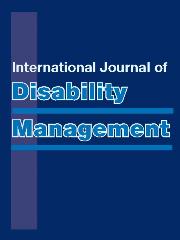Article contents
A Selective Critical but Constructive Desktop Appraisal of the American Medical Association Guides to the Evaluation of Permanent Impairment (AMA 6)
Published online by Cambridge University Press: 23 February 2012
Abstract
This desktop review has been conducted, from the reviewers' perspective, to evaluate the merits, advantages and disadvantages of adopting the 6th edition of the American Medical Association (AMA6) Guides for the Evaluation of Permanent Impairment. The reviewers do not make any recommendation as to whether AMA6 should or should not be adopted by any particular jurisdiction, but rather provide comment from the perspective of a critical but constructive appraisal of published material. The observations reported represent the opinions of the reviewers, based on their appraisal of selected sections of AMA4, AMA5 and AMA6 and the associated literature. AMA6 has become surrounded by considerable controversy. At the time of review, at least two jurisdictions in the United States have voted against adoption of AMA6. While the paradigm shift away from the World Health Organization (WHO) International Classification of Impairment, Disability and Handicap (ICIDH) framework to the WHO International Classification of Functioning, Disability and Health (ICF) framework has attempted to ‘move with the times’, and AMA6 has attempted to reach higher levels of internal consistency and interrater and intrarater reliability, the methods used to achieve a radical change in the Guides has come under criticism. It is quite difficult to distinguish between speculative and substantive criticism, because of paucity or obscurity in both source documents and subsequent commentary. A range of concerns have been identified.
- Type
- Articles
- Information
- International Journal of Disability Management , Volume 4 , Issue 2 , 01 September 2009 , pp. 27 - 51
- Copyright
- Copyright © Cambridge University Press 2009
- 2
- Cited by


